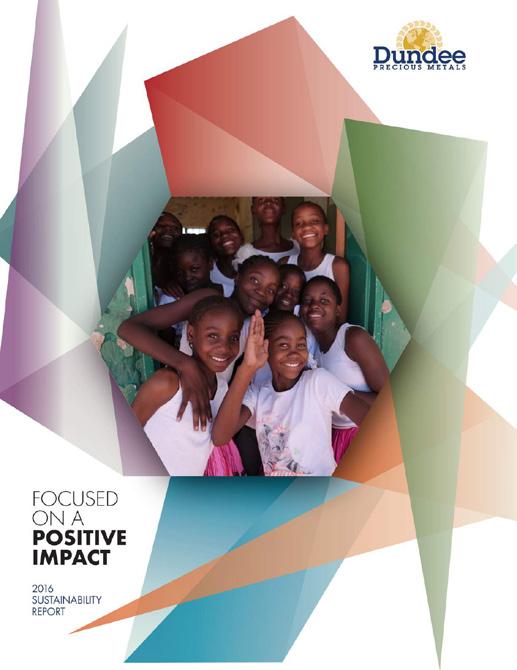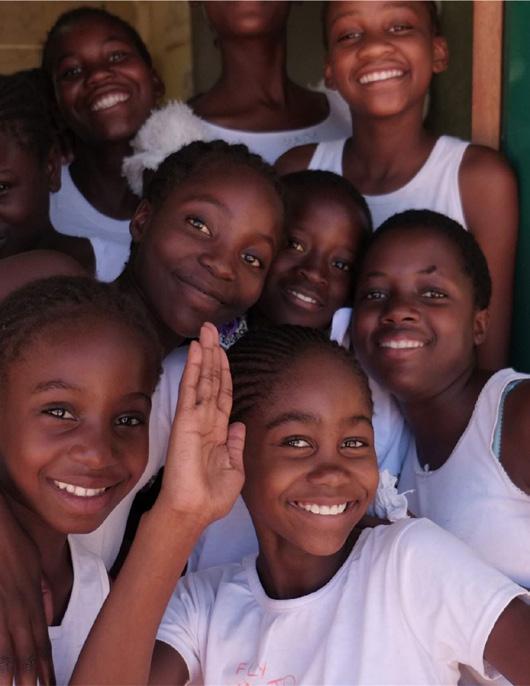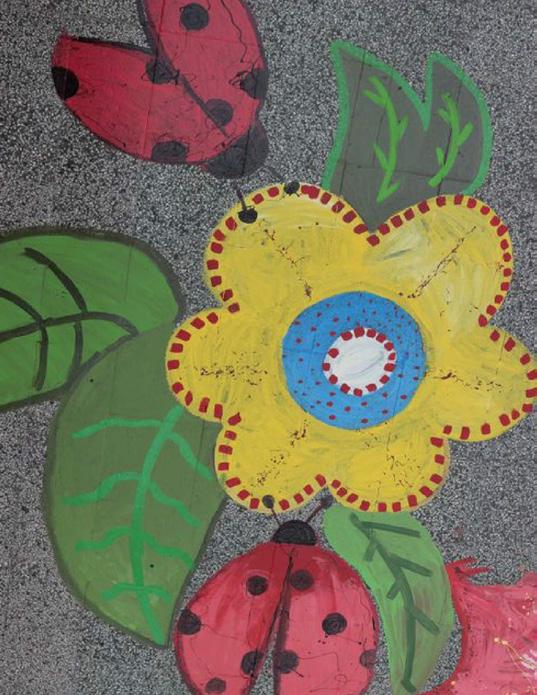
3 minute read
Reports
CORPORATE
Sustainability Report
Advertisement


FOCUSED ON OUR 2016 SUSTAINABILITY HIGHLIGHTS
Celebrating the opening of the Ondundu Public School dining hall – Tsumeb.
2 DUNDEE PRECIOUS METALS INC. 2016 SUSTAINABILITY REPORT
FOCUSED ON OUR PEOPLE THROUGH POSITIVE IMPACT
MATERIAL ASPECTS COVERED IN THIS SECTION
Employment [LA1] Labour/Management relations [LA4, MM4] Training and education [LA9] Diversity and equal opportunity [LA12] Equal remuneration for women and men [LA13] Labour practices grievance mechanisms [LA16] Occupational health and safety [LA6] Non-discrimination [HR3] Freedom of association and collective bargaining [HR4] Human rights grievance mechanisms [HR12]

Safety painting initiative by students in Chelopech.
28 DUNDEE PRECIOUS METALS INC. 2016 SUSTAINABILITY REPORT FOCUSED ON OUR PEOPLE THROUGH POSITIVE IMPACT
Labour Practices
Disclosure on Management Approach
Our employees are one of our most important stakeholder groups. And so, a substantial proportion of our financial resources are allocated to employee training, fair compensation and to protecting our employees from exposure to undue health and safety risks. Our success in these areas has an impact on every part of our business where there is an element of human interaction. Due to the geographic and cultural diversity of our workforce, we have created a blend of corporate, regional and site-based human resource policies and programs. This combined approach has allowed us to implement targeted local programs that attract, retain and motivate our staff, while still reflecting local needs and cultures.
Human resource policies are incorporated into our Code, site-specific collective bargaining agreements, and the local labour standards and laws in the countries where we operate.
Equality and Diversity
We use several methodologies for determining pay levels and try to match or exceed average wages in the countries where we operate. In Bulgaria we use the Mercer International Position Evaluation methodology and in Namibia we use the Patterson methodology (for lower-wage employees and union groups). We also compare pay levels with current regional market data and salary surveys (where reliable data exists) and attempt to target pay levels in the 75th percentile. Using a gender-neutral job evaluation methodology, we also seek to ensure that men and women receive the same remuneration for the same type of occupation according to their level of experience and length of employment.
Isolation training – Chelopech.
At Tsumeb, we comply with the Affirmative Action Act of 1998, which legislates equal opportunities. It should also be noted that local labour laws in Bulgaria restrict the participation rates of women working underground in the mining sector. Women made up 17% of our global workforce in 2016.
Recruitment and Professional Development
At all our operations, we seek to attract and hire locally based employees. Ninety-eight percent (98%) of our total workforce are local nationals. Eighty-nine percent (89%) of the positions at manager level and above are held by local nationals. We have 24 expatriate employees working throughout DPM and many of these positions are a function of a worldwide shortage of specific skilled labour, such as exploration specialists, project-related specialists and geologists.
Across all our operations, we are progressing with our plans to build and develop in-country senior management teams comprised of local nationals. Professional development is a key objective and we provide a variety of learning opportunities. Key in-house programs include training and leadership skills development, and professional and technical skills development.
In addition, tuition reimbursement is provided on a case-by-case basis for off-site, employment-related education. This ranges from university degree courses and technical short courses to international executive management courses for our senior managers and leadership team. Also, external executive coaches are working with a large number of our senior managers as part of their ongoing professional development.
29 3 The Primary colours are the two colours used in our logo: Pantone 288 (Blue) and Pantone 110 (Gold). Black is also considered one of the Primary colurs in our colour palette most often used for body copy.
The two supporting or Secondary colours are Pantone 364 (Green) and Pantone 1805 (Red). These can be used to compliment the primary colours in their pure form or as tints.
We have developed a tertiary palette for use in limited and unusual situations.
See pages 20/21 for more information.










